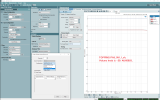Want to ask some more. There are gears with balanced output that are "Impedance-Balanced" (some called it semi-balanced) with signal driving one leg only(hot); the other leg(cold) at 0V(ground). Someone on this thread mentioned using his Audient audio interface that is impedance-balanced only with his PA5 for months already and still working.None of those is a truly balanced conversion...
A balanced signal has 2 equal signals in opposing polarities ....
Is there evidence that using such gear will cause issue with the PA5?? Not seeing any warning from Topping about using such "balanced" gear with PA5.
Mainly want to focus on the reliability side of things. Thanks.





